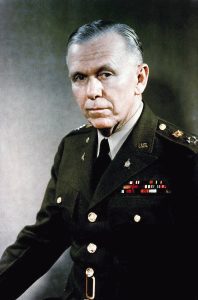By Viktoria Butanu
Development aid, or foreign aid as we know it today, has been observed in Europe since the 18th century when the more powerful states provided assistance to their allies in an attempt to secure future loyalty. Today, aid represents the international flow of capital, goods, or services from a donor country or international organization to a recipient country with the goal of providing assistance and aiding development. Modern literature describes various types of aid such as economic, military, and emergency humanitarian aid although some international organizations do not take into account military and humanitarian aid when calculating aid flows. This article takes a look at the major milestones in the history of development aid on the European continent.
The origin of foreign aid was considered to be a means to engender diplomacy in the 18th century. Frederick the Great of Prussia provided assistance to several countries and regions in an attempt to secure their loyalty in the event of a future crisis. The bilateral alliances formed in this way meant that the Prussians were confident that they had the military backing of these countries.

European foreign aid continued into the 19th and 20th century with the wealthier European nations financially supported their colonies in order to improve their infrastructure. However, foreign aid as we know it today began with the Marshall Plan, named after the then U.S. Secretary of State, George C. Marshall.
On June 5, 1947, while at Harvard, Marshall called for an aggressive foreign aid policy to help to rebuild Europe after the devastation it had endured during World War II.
“Our policy is directed not against any country or doctrine but against hunger, poverty, desperation, and chaos”, said Marshall in his speech.
One year later, the Marshall Plan was enacted.
The help offered to western European nations was not purely humanitarian. Just as in the 18th century, it ensured allegiance to the US against the emerging Soviet Union.
International development aid
In the meantime, several other development aid programs that focused on military, economic, and technical support began to emerge in the US. Ten years later, under John F. Kennedy, the US decided to centralize all foreign aid efforts into one agency.
In the 1960s, Japan also emerged as a leading actor in global foreign aid. At the same time, the World Bank began promoting the idea of aid to developing countries in the form of health, education, and sanitation development. With the collapse of the Soviet Union in 1991, newly independent states started to receive aid via various programs as means to re-establish democratic values.
Types of development aid
The most common type of development aid is Official Development Assistance (ODA) which is defined by the Organization for Economic Development and Cooperation as flows of development assistance provided by the state/local governments or by their executive agencies (e.g., the French Development Agency) to developing countries to promote economic development and welfare.
In 2020, the level of foreign aid from official donors achieved an all-time high reaching US$161.2 billion representing a 3.5% increase from 2019.
Read more about types of aid in our article: The main types and the evolution of international aid
Aid impact
Today, the resources given to the countries involved are the largest in the entire history of foreign aid. There is a net transfer of wealth that moves from the poorest countries of the world to the richest countries in the amount of US$200 billion a year, according to the UN Conference for Trade and Development.
However, increasing aid commitments is not the only target for states. Developed countries must tackle the quality of their assistance as international efforts in the field of foreign aid still face sharp criticism regarding certain aspects of the practice.
“Foreign aid has not improved the lives and living conditions of the world’s poorest people. The gap between the richest and poorest countries is tremendous and increasing. Aid has not achieved desirable results in war-torn countries. For every dollar of aid rich countries give to poor countries, they receive seven to ten dollars back in debt repayment, profit and trade”, says Maliha Chishti, a researcher of war and post-conflict peacebuilding.

